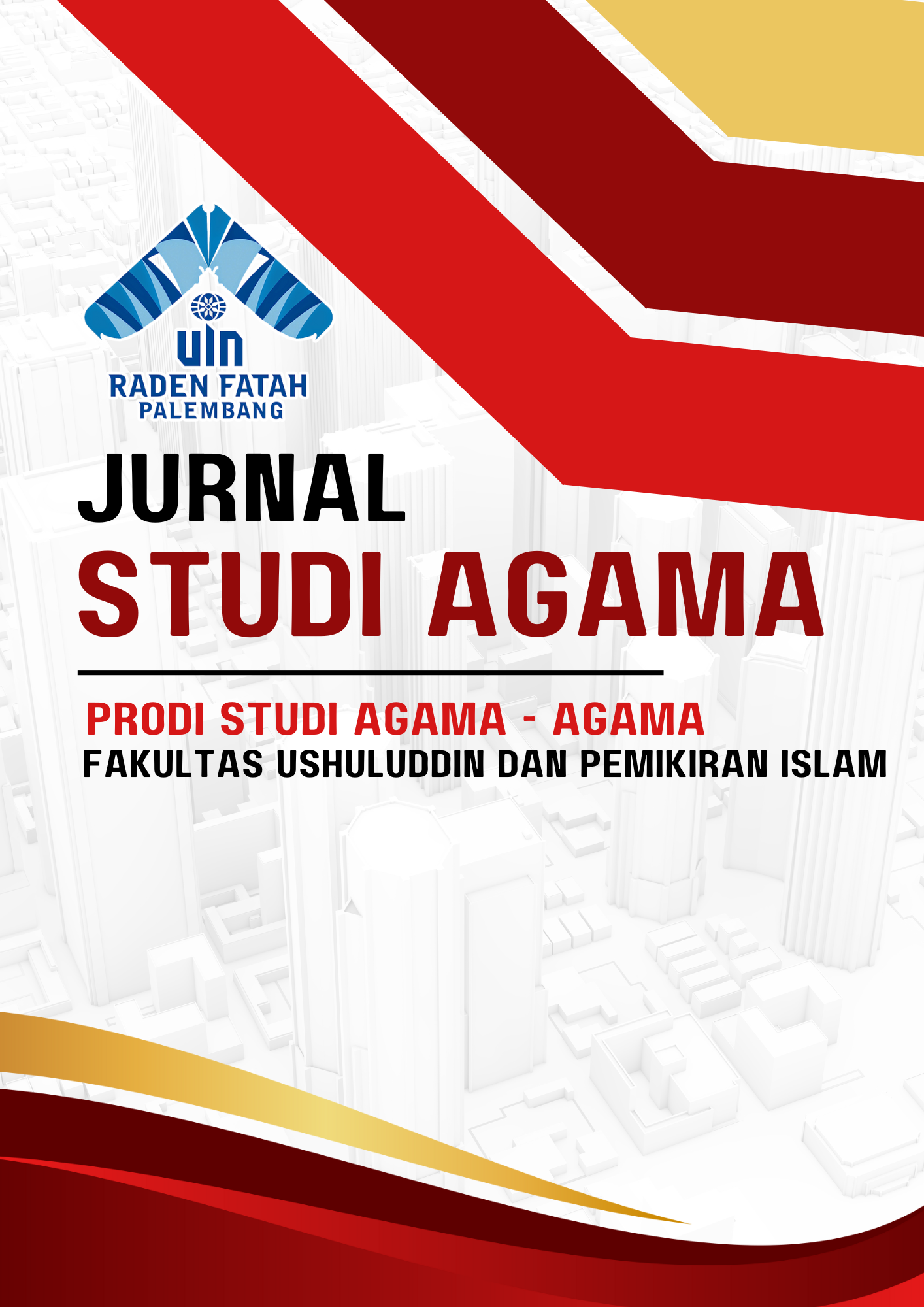Interfaith Harmony in Tajuk, Getasan, Semarang
Main Article Content
Abstract
This research aims to explore the narrative of religious harmony values through an ethnographic study of Eid al-Fitr, Christmas and Vesak celebrations in the community of Tajuk, Getasan, Semarang Regency. The importance of this research lies in the effort to understand how interfaith harmony can be maintained and strengthened through religious traditions and celebrations, which in turn can contribute to social stability and harmony in a multicultural society.The research method used is a qualitative approach with data collection techniques through participatory observation, in-depth interviews, and document analysis. The research involved the active participation of various religious believers in Tajuk, who provided in-depth perspectives on the practices and values underlying their religious celebrations.The purpose of this research is to identify and analyze the values of harmony that emerge in the celebrations of Hari Raya Idul Fitri, Hari Raya Natal, and Hari Raya Vaisak, as well as to understand how these values are translated in everyday social interactions. The research also aims to provide practical recommendations for policy makers and community leaders in promoting interfaith harmony. preliminary results show that religious celebrations in Tajuk are not only a spiritual moment but also an occasion to strengthen social ties and interfaith harmony.
Article Details

This work is licensed under a Creative Commons Attribution-ShareAlike 4.0 International License.
Authors who publish with this journal agree to the following terms:
- Authors retain copyright and grant the journal right of first publication with the work simultaneously licensed under a Creative Commons Attribution-ShareAlike 4.0 International License that allows others to share the work with an acknowledgement of the work's authorship and initial publication in this journal.
- Authors are able to enter into separate, additional contractual arrangements for the non-exclusive distribution of the journal's published version of the work (e.g., post it to an institutional repository or publish it in a book), with an acknowledgement of its initial publication in this journal.
- Authors are permitted and encouraged to post their work online (e.g., in institutional repositories or on their website) prior to and during the submission process, as it can lead to productive exchanges, as well as earlier and greater citation of published work
How to Cite
References
Baumann, Gerd, 1999. The Multicultural Riddle: Rethinking National, Ethnic, and Religious Identities, Routledge, New York.
Beatty, Andrew, 1999. Varieties of Javanese Religion: An anthropological account, Cambridge University Press. Cambridge.
Damami, Muhammad, 2002. Makna Agama Dalam Masyarakat Jawa, LESFI, Yogyakarta.
Endraswara, Suwardi, 2003. Falsafah Hidup Jawa, Cakrawala, Tangerang.
Geertz, Clifford, 1960. The Religion of Java, The University of Chicago Press, Chicago.
L. Berger, Peter and Thomas Luckmann, 1967. The Social Construction of Reality: A treatise in the Socilogy of Knowledge, Anchor Books, New York.
Mulder, Niels, 1996. Inside Indonesian Society: Cultural Change in Java, Pepin Press, Amsterdam.
Saidi, Anas, dkk., 2004. Menekuk Agama Membangun Tahta: Kebijakan Agama Orde Baru, Desantara, Jakarta.
Schutte, Ofelia, 1993. Cultural Identity and Social Liberation in Latin American Thought, State University of New York Press, Albany.
Team, 2003. Petunjuk Singkat Bagi Penulis Sosiohumaniora Seri B (Humaniora): Makalah (Tidak Diterbitkan), Universitas Gajah Mada, Yogyakarta.
Van Akkeren, Philip, 1970. Sri and Christ: A Study of the Indigenous Church in East Java, Lutter Worth Press, London.
Weber, Max, 1993. The Sociology of Religion, Beacon Press, Boston.
